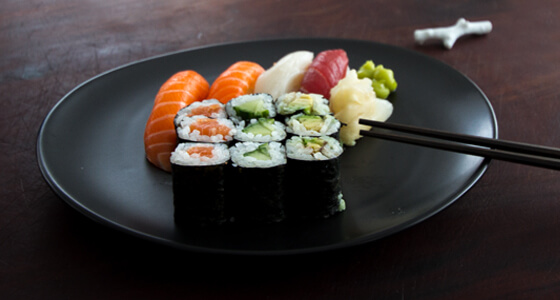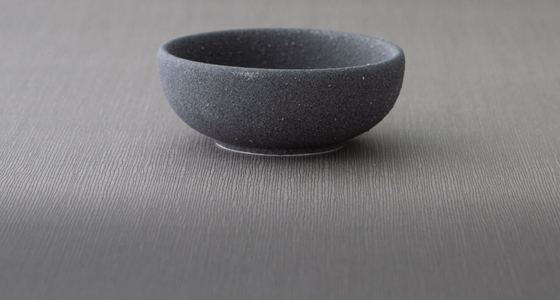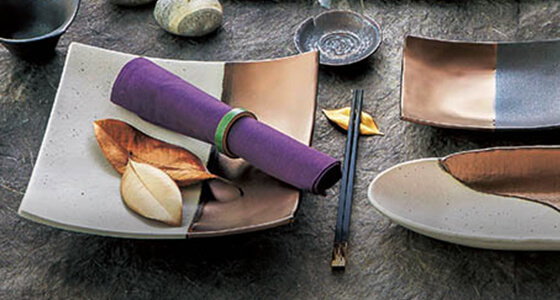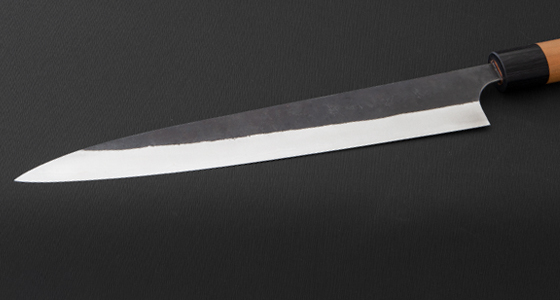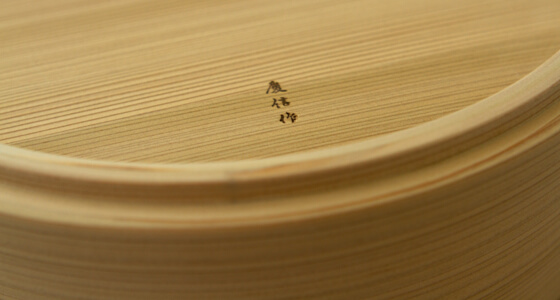
Sushi Dishes
Sushi is a culinary artwork, perfected with the right Sushi Dishes
Sushi originated from a fermentation method of raw fish in Southeast Asia and made its way to Japan via China. In the two characters of the Japanese writing for Sushi, the first character signifies "long life." The second character means sour or slightly acidic. Undoubtedly, Sushi was perfected in Japan. Loved all over the world, Sushi offers a wonderful variety both visually and in taste.
Original Nigiri sushi consists of fresh seafood and rice. The best type of rice for preparing sushi is Koshihikari, known for its excellent sticking and shaping properties.
The often colorful combinations in sushi often look most elegant on minimalist, monochromatic sushi dinnerware. The very high-quality black sushi plates, available in various sizes, create a wonderful contrast to the green-wrapped rice. Sushi dinnerware naturally includes dipping saucers for soy sauce, as well as matching chopsticks with chopstick rests. The particularly sharp sushi knife, as well as a hangiri for seasoning sushi rice, and optionally a soy sauce pitcher, are part of the sushi accessories. Sushi is rolled using bamboo sushi mats, typically around 25 cm x 25 cm in size.
Sushi - Traditional Preparation in Japan
Sushi enjoyment in Japan differs somewhat from the customs practiced here. For example, wasabi and soy sauce are usually not mixed, as is often seen in Germany, but wasabi is used to season each individual piece of sushi. In Japan, it's also common to dip the fish side, not the rice, into soy sauce. It's interesting to note that in Japanese cuisine, a special sauce is often mixed in bowls for sushi because pure soy sauce tastes too intense with fresh raw fish. Dashi, sake, and mirin are heated, cooled, and used in this way. Another excellently tasting ingredient, alongside fresh fish, rice, and dried and roasted seaweed sheets (nori), is Tamagoyaki - the Japanese omelet.
A small tip: Japanese chefs often let the rice soak in cold water for 10 minutes before cooking. Afterward, the rice is washed to remove the thin layer of starch that has formed on the rice grains since harvest. This prevents the rice from sticking too much later on.
Homemade Sushi: A Celebration for the Senses
Sushi is not only a culinary delicacy but also a cultural icon. With its perfect balance of flavors, textures, and aesthetic presentation, it's a true delight for the senses. Creating your own delicious sushi creations at home is a joy. On our page "Making Sushi Yourself - Delicious Japanese Sushi Recipes" you'll find inspiring recipes and practical tips to perfect your sushi skills. Whether you're a beginner or an experienced sushi chef, there's something here for everyone.
Enjoying Health - Insights into Sushi Nutrition
However, alongside the culinary enjoyment, the question arises: Is sushi healthy? On our page "Is Sushi Healthy?" we shed light on this exact topic and examine the nutritional aspects of sushi. Learn more about the nutrients in the various ingredients, the potential health benefits, and what you should pay attention to in order to enjoy a balanced sushi experience.
Served on stylish sushi dinnerware, sushi is just as suitable as appetizers at an art exhibition as it is for a dinner for two.

